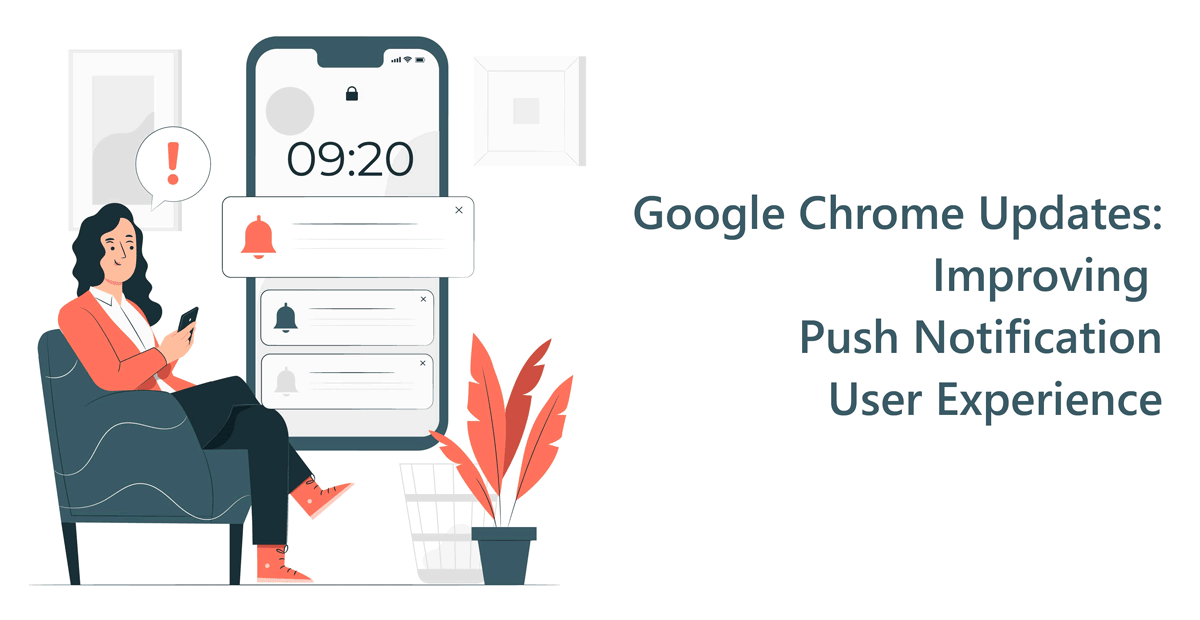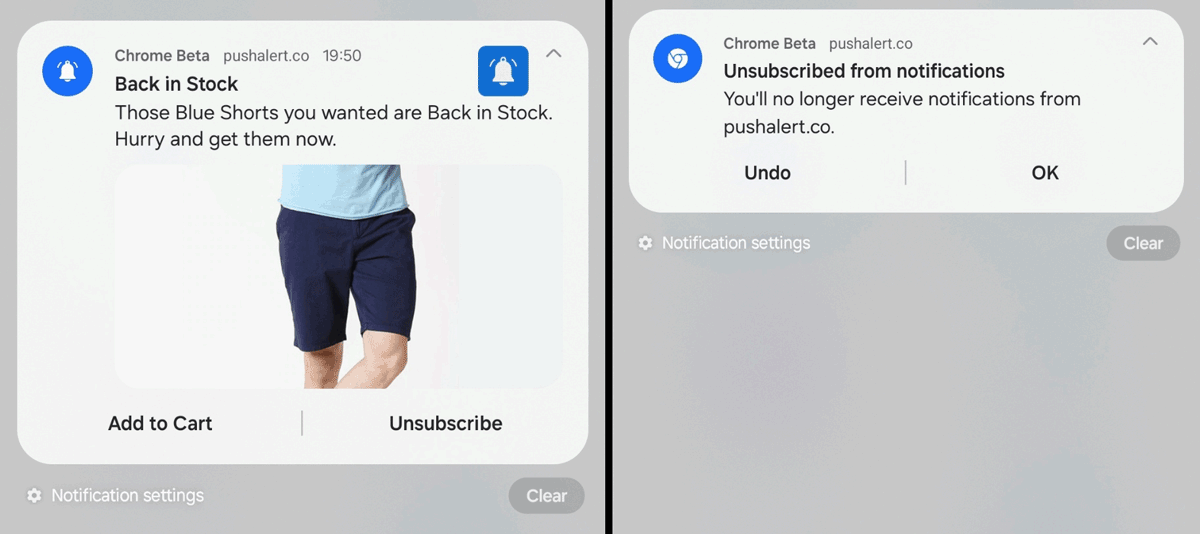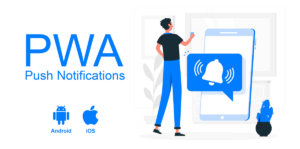
Google Chrome Update Brings Option to Opt-out of Notifications.
Google has been working on improving notifications experience on its Chrome browser across platforms. With the rise in excess notifications, Google has taken the mantle to improve the user experience.
Google Chrome for Android has made several enhancements to Safety Tools and has also added an Unsubscribe button to notifications. This update, seemingly straightforward at first glance, holds significant implications for users, publishers, and e-commerce businesses. Here’s why this update is exciting, what it might mean for everyone involved, and how it could reshape the push notification landscape over time.
The Backstory: Why Push Notifications Needed a Tune-Up
Web push notifications have become a popular way for websites to communicate with users, whether it’s news updates, shopping deals, or alerts on things like weather and sports. They let people get real-time information without having to log in or open an app. At their best, push notifications keep people connected and informed, but at their worst, they can feel overwhelming, even invasive.
Until now, if users wanted to stop getting notifications from a particular site, they had to dive into their browser settings, which isn’t exactly intuitive for most people. Chrome’s new Unsubscribe button changes this: now, when users get a notification, they’ll have the option to opt out with one click. But if they accidentally unsubscribe from notifications, Google has added an undo option as well. The Unsubscribe button is not shown by default, it will only be shown if the user expands the notification with a swipe. It’s a small tweak with big potential to improve everyone’s experience.

Google Chrome on Android – Option to Opt-out of Notifications (Unsubscribe)
We have always maintained that subscribers should be respected and personalization is the key to keep them engaged. You can always enable our widget on your websites to let users subscribe/unsubscribe from notification at will. This update is slowly rolling out, starting with Pixel devices and would soon be available across other devices as well.
Why This Matters for Subscribers
- A Breath of Fresh Air for Busy Screens
The Unsubscribe option in notifications gives users a simple way to manage their digital space. We’re all dealing with information overload, and notifications can quickly get out of hand. With this one-click unsubscribe option, users can remove unnecessary notifications as soon as they become too much. It’s a much-needed solution for keeping digital clutter under control. - Freedom to Customize the Flow
People aren’t anti-notification; they just want to choose the notifications that are worth their attention. The Unsubscribe button gives users the power to easily refine their notification flow based on what matters most to them. It’s a little bit like curating your inbox, making sure only relevant content comes through, while giving you an easy way to “opt-out” when something isn’t adding value. - Better Privacy and Control
Many people feel that constant notifications are too much, almost as if they’re being monitored or overwhelmed by unwanted pings. The Unsubscribe option lets users easily cut off access if notifications feel invasive. It’s a privacy-friendly update that should make people more comfortable allowing notifications in the first place, knowing they can opt out quickly if needed.
What It Means for Publishers
- Better Quality Engagement
Publishers want users to be engaged, but bombarding them with notifications isn’t the way to build loyalty. The Unsubscribe option means that only genuinely interested users will stick around, which can actually improve engagement metrics. Instead of sending notifications to a largely disinterested audience, publishers can focus on those who are truly engaged, which should lead to better interactions and higher-quality traffic. - More Insight Into What Works
If publishers see a rise in unsubscribes after a certain type of notification, it’s instant feedback that something isn’t resonating. This could prompt them to rethink their approach and experiment with content, frequency, or timing. With users actively curating their notifications, publishers can get a clearer picture of what audiences really want—and adapt to those preferences over time. - A Chance to Build Trust
A clear Unsubscribe button builds goodwill. When users feel that a publisher respects their time and attention, they’re more likely to trust that brand long-term. This transparency and respect could play a big role in how users perceive publishers, making it more likely they’ll return for content on their own rather than feeling annoyed or “spammed.”
Benefits for E-commerce Businesses
- Potential for Higher Conversion Rates
E-commerce sites thrive on engagement, but bombarding customers with notifications for every sale and discount can be a turnoff. With the new unsubscribe option, e-commerce brands can keep their notification lists full of genuinely interested users—people more likely to click through and make a purchase. This kind of “self-filtering” could actually lead to better conversion rates, since those remaining on the list are more likely to be interested in what’s being promoted. - Building a More Loyal Customer Base
When customers feel bombarded, they’re likely to unsubscribe altogether or even avoid the site. But when they know they can control the flow, they’re more likely to stay subscribed—and even become long-term customers. For e-commerce brands, this button could help retain customers who might have otherwise tuned out. - More Efficient Marketing Spend
With fewer uninterested users on notification lists, marketing teams can focus efforts on people who are most likely to convert. The Unsubscribe button helps companies avoid wasting resources on users who aren’t engaged, which can translate into a higher return on investment (ROI) for notification campaigns. Instead of trying to reach everyone, e-commerce brands can reach the right people.
The Bigger Picture: A New Era of Respectful Digital Marketing?
Chrome’s Unsubscribe button for notifications isn’t just a one-off change; it reflects a broader shift toward user empowerment and privacy. The new Safety Tools also list websites that spam users with too many notifications. Giving people the option to unsubscribe from them. As people become more selective about the notifications they accept, businesses will be encouraged to focus on quality over quantity. Here’s what that could mean for the digital landscape as a whole.
- A Push for User-Centric Marketing
The ability to unsubscribe quickly will challenge publishers and businesses to get creative with the content they send. Notifications will need to be genuinely valuable if they’re going to keep people’s attention. This could lead to a more user-centered approach in marketing, where brands think carefully about the value they’re delivering to users instead of simply chasing quick clicks. - A Step Toward Privacy-First Engagement
Respecting users’ preferences is a cornerstone of privacy, and this update brings Chrome one step closer to a more privacy-conscious web experience. Businesses that respect user choices and reduce unnecessary notifications are likely to see a payoff in customer loyalty and satisfaction, especially in a world that’s increasingly concerned with digital privacy. - Fewer Full Blocks, More Thoughtful Engagement
Many users who feel bombarded end up blocking all notifications, which is bad news for everyone. With the Unsubscribe button, people are less likely to go for a complete block because they can manage notifications on a case-by-case basis. This makes it easier for businesses to maintain access to users without pushing them away altogether. - Cleaner Data for Marketers
This feature might also improve the quality of data marketers use to measure engagement. With uninterested users opting out, notification engagement rates should become more accurate. Marketers will be able to see the effects of their notifications more clearly, making it easier to measure performance and plan future campaigns based on real interest.
Potential Downsides: A Wake-Up Call for Some
While the Unsubscribe button has plenty of benefits, it does require businesses to step up their game. If notification content isn’t relevant or respectful, they may see their unsubscribe rates spike. The new approach from Google means businesses will need to pay more attention to user preferences and may need to invest in more personalized, well-timed notifications. Publishers should focus on limited, high-value and targeted notifications. Some companies might even need to rethink how they approach push notifications altogether, testing new strategies to keep users interested without overwhelming them.
Final Thoughts: A Better Future for Digital Notifications
Chrome’s new developments are a small but significant change that could help turn push notifications into an even more valuable tool. By making it easy for users to opt out, Chrome is giving them control over their experience while challenging publishers and businesses to be more thoughtful about the notifications they send. Over time, this shift would create a healthier digital ecosystem where users feel respected, publishers reach engaged audiences, and businesses connect with people who genuinely care about their messages. All in all, it’s a win-win that might just change how we look at push notifications moving forward.


